It’s your funeral: Challenging the commodification of death by giving it back to the bereaved
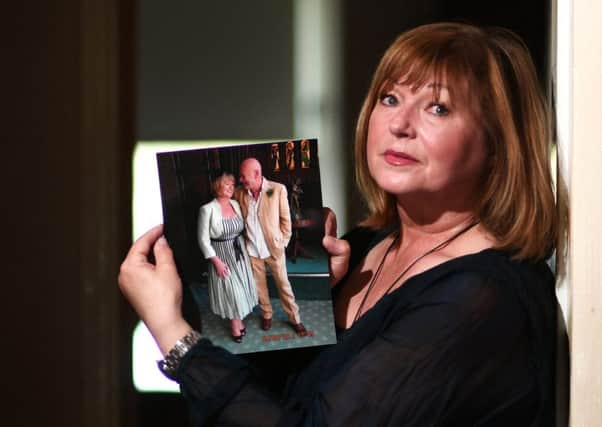

They had come to mark the passing of Ross McLellan, an ex-detective sergeant with a lived-in face and a wicked sense of humour, who had died 12 days earlier.
As the burgundy velvet curtains closed around his pine coffin, and the catafalque began its descent, the three representatives from Caledonia Cremation said: “Love you, darling: not half,” a term of endearment Ross had repeated to his wife, Joan, almost every day of their 20-year relationship.
Advertisement
Hide AdAdvertisement
Hide AdNine miles away at her flat in Thornliebank, Joan noted the time and thought about her charismatic husband, who had wanted his body disposed of with as little ceremony as possible.
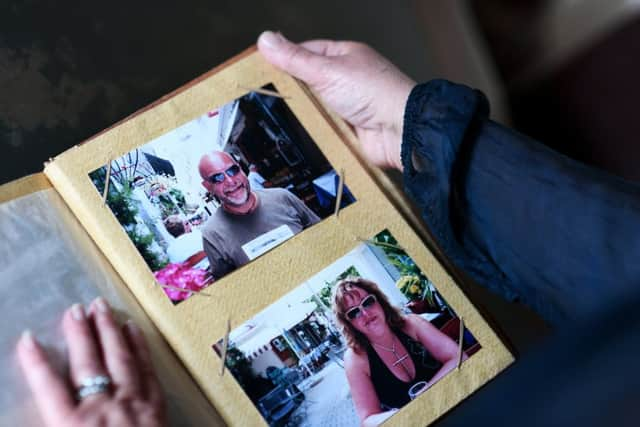

“Oh, Ross was so intelligent, so funny and so kind, he couldn’t have been summed up in a five-minute eulogy,” she says. “He was incredibly generous, but he hated being fussed over. He was a jeans and T-shirt man; a man who, when he had flu, would take himself off to his bedroom and say, ‘Just leave me alone and let me get on with it.’ He was the same about death. ‘Just put me in a cardboard box and get me burned, Joan,’ he would say; so I knew I was fulfilling his wishes.”
Direct cremations – committals that take place without family present – are on the rise. In part, that is to do with cost: direct cremations come in at around £1,000 compared with £3,000-plus for a traditional funeral.
Caledonia Cremation – which focuses exclusively on this service – is a non-profit-making organisation set up with funeral poverty in mind. But, endorsed by the likes of David Bowie, direct cremations are also being embraced for aesthetic reasons. Spurning the ritual and ostentation of a traditional funeral – with its gold-plated coffin handles and gaudy floral tributes – is a final statement of identity; a defiant middle finger to the commodification of dying.
Ross and Joan had endured more than their fair share of terrible obsequies. They had sat in cold, stiff funeral parlours with plastic flowers, listened to impersonal tributes delivered by virtual strangers and watched fake mourners shedding crocodile tears.
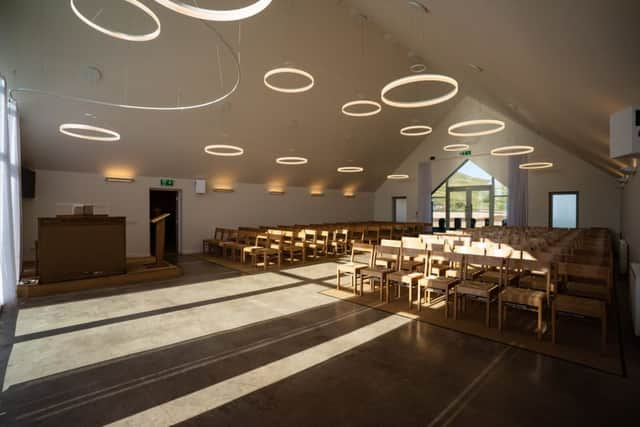

“Ross despised his mother’s funeral because he had to walk behind the coffin all suited and booted like a paid minder. And the last funeral we went to together was a farce. There was a big church service, though the girl was not religious, with people who wouldn’t have given her the time of day laying white roses on her coffin. We knew we didn’t want any of that when our time came.”
Ross, who had been working as a lorry driver, took ill on 20 December. “He turned yellow overnight,” says Joan. At the Queen Elizabeth Hospital in Glasgow doctors found a massive tumour on his liver. And on 4 January the couple were told nothing more could be done.
When Ross was discharged two days later, the couple moved into his brother’s house in the hope that Joan would be able to take him out on country drives (it would have been difficult to manoeuvre him in and out of their flat). But tensions had already started to build. After learning Ross had a very short time left, Joan had broached his desire for a direct cremation, only to be told: “That isn’t fair on the rest of us.”
Advertisement
Hide AdAdvertisement
Hide AdWith his condition declining, Ross was able to confirm his wishes, but, by the time they took up residence with Joan’s in-laws, the atmosphere was fraught. The last few days of Ross’s life were traumatic. He was in pain, flailing about, while Joan felt increasingly marginalised.
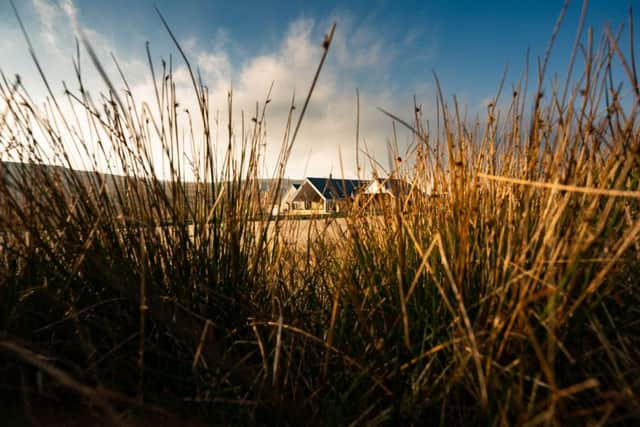

She says discovering Caledonia Cremation was her salvation. “I spoke to Ian [Jamieson], an ex-police officer of the same vintage as Ross. He was lovely and understanding. He told me they didn’t use cardboard boxes, but that their coffins were very simple, and he promised that, when the time came, Ross would be well looked after.”
After her husband died at 5pm on 10 January, a row broke out in the house, so Caledonia Cremation came out as quickly as they could to collect his body. “The two Ians walked into the living room and hugged me and said how sorry they were. They weren’t intimidating figures in pin-striped suits and top hats; they were dressed in casual anoraks. They were so caring; nothing like other funeral directors I had dealt with.”
Two days after the cremation, Johnstone brought Ross’s ashes to Joan’s house; the pair sat and chatted over a couple of gin and tonics. “That was a lovely, personal touch,” she says.
Since then, Joan has divided Ross’s ashes into thirds. Later this year, she will scatter them at various locations: Inveraray, a lake near Fenelon Falls in Canada and Indian Rocks Beach in Florida, where they own a timeshare. “Each time, we will drink champagne and share stories about Ross,” she says. “They will be very special occasions.”
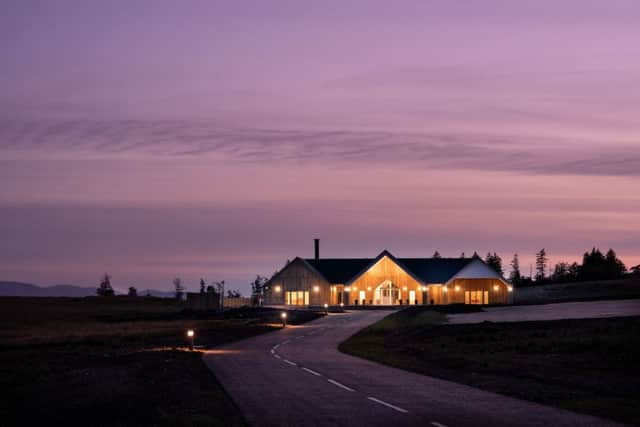

A Funeral Revolution?
Death is often described as the last taboo, yet we are obsessed by it. Images of war or famine or lone wolf shootings dominate our news bulletins. As Tony Walter points out in his book, What Death Means Now, death sells, particularly if the person involved is a celebrity who has met an untimely end. Where we fall down, however, is in confronting our own mortality and the mortality of those we love.
It wasn’t always thus. Until the 20th century most people passed away at home. The family would be involved in washing and laying out the deceased, who would be kept on view in an open casket. The march of science and the introduction of the NHS, however, meant death, like birth, became more clinical, with control ceded to medical experts.
As hospital deaths became more common, the bereaved found themselves pushed to the far side of the cubicle curtain. Just as supermarkets have shielded us from the realities of food production, so medicalisation shields us from the realities of death.
Advertisement
Hide AdAdvertisement
Hide AdThe funeral industry widens that gulf between mourners and the mourned. By the mid-19th century Charles Dickens was already expressing his distaste at the way in which power had been wrested from the bereaved and private expressions of grief turned into a status symbol.
In a passage from Great Expectations, Joe Gargery describes the kind of burial he would have liked for his late wife: “I would, in preference, have carried her to the church myself, along with three or four friendly ones wot come to it willingly harts and arms,” he laments, “but it were considered wot the neighbours would look down on such and would be of opinions as it were wanting in respect.”
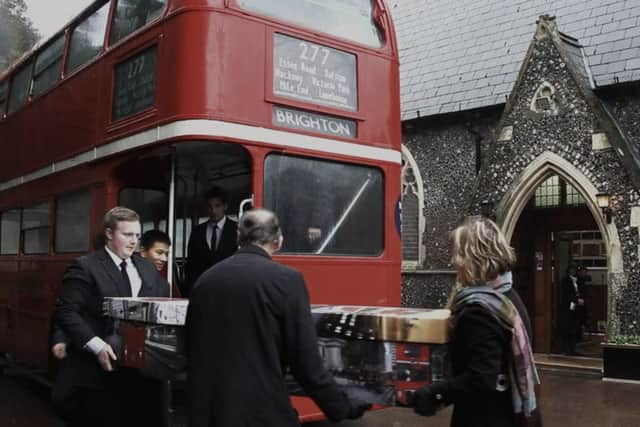

Has much changed since then? Despite the pleas of social reformers, the industry remains unregulated and prone to up-selling. The worst companies feed on their customers’ grief, showing them the most expensive packages first, and trusting they will feel too guilty to downgrade. They also take an almost proprietorial attitude towards the deceased, casting the family out of the room as they take charge of the body. Some people may be grateful for the help, but others feel disempowered; like bit players in someone else’s tragedy.
Decades of not confronting death have stripped us of the tools to challenge such practices. Recently, however, there has been a cultural shift. The late Jon Underwood’s Death Cafe movement, which encourages people to chat about death over tea and cakes, has opened up the conversation. Good Death Week, which starts tomorrow, aims to build on his awareness-raising.
This shift is being driven by the secularisation of society. Whatever one’s position on God, religion at least provides a recognisable framework for death. Unmoored from faith, people are being forced to seek out new rituals.
Walter writes that, in a godless world, the focus of mourning changes. Whilst religious services send the soul onwards on its journey to heaven, secular ones reflect on a life well-lived.
The funeral industry has been slow to adapt to these changes and resistant to the idea that what people require in times of grief is not aloof efficiency, but human empathy.
Caledonia Cremation, however, is one of several organisations in the vanguard of a funeral revolution; they are challenging the status quo, widening options and trying to help families deal with death on their own terms.
My Story
Advertisement
Hide AdAdvertisement
Hide AdMost people of a certain age have a sad funeral story. This is mine. In 1978, my dad died suddenly at the age of 36, leaving us ship-wrecked and concussed. I was 10, my brother nine, and my mother, 33.
After a mass at our parish church, his body was taken to Masonhill Crematorium in Ayr. Here are the things I remember: the curtains swallowing up his coffin like a macabre magic show; the formal line-up, with the adults who told me to be “strong”; and the absence of ashes to scatter or inter, which meant there was no tangible marker of his existence.
At a distance of 40 years, I feel sorry for the wee girl who so earnestly accepted her role as emotional ballast. But I feel sorrier still for the young widow expected to know what to do and how to behave.
The thing that distressed her most, she says now, was the music. “I was asked if I wanted to bring my own, but I was in shock and told them it was fine for them to use theirs. Then I heard it – anodyne and dirge-like – and all I could think was: ‘He would have hated this.’”
As for the ashes, she was asked if it was OK just to scatter them in the grounds. “Again, I said ‘yes’. I had no idea how I’d feel about it later.”
These memories are swirling around my head as I drive to meet Jeremy Hamilton, the man behind the new Clyde Coast and Garnock Valley Crematorium near Largs.
Hamilton spent 20 years as a political lobbyist, but then, in 2011, a close family member died in traumatic circumstances. “We were already devastated, but our distress was compounded by our experience at Linn Crematorium [in Glasgow],” he says. “When we arrived, two other funeral parties were already there. The cars were all clashing and we couldn’t find a place to park. Inside, there was condensation running down the wall and the speakers were broken – it was awful.”
A year later, Hamilton suffered a breakdown. There were many things around the death he found difficult to process, but the thing he kept coming back to was the experience at the crematorium. So, after 12 months in a darkened room, he decided to build an alternative.
Advertisement
Hide AdAdvertisement
Hide Ad“I wanted to get rid of the brutalist architecture and conveyor belt service that exists in so many local authority facilities,” says Hamilton. “I wanted to create a beautiful building and fill it with emotionally intelligent staff so other people wouldn’t have to go through what we did.”
As he ushers me into the ceremony hall, I am reminded of Ray Kinsella and his Field Of Dreams. Hamilton had no experience of the funeral industry and no money. “For two years, I went round with holes in my shoes,” he says. But, with the support of his dad, Jim, he realised his multi-million-pound vision.
There have been 400 ceremonies here since the building opened a year ago. Hamilton’s company – Horizon Cremation – now has another five facilities in the pipeline, including one near the Hurlet in East Renfrewshire, which will be a rival to the Linn.
Set in the Clyde Muirshiel Regional Park, Clyde Coast and Garnock Valley Crematorium – the highest in the UK – is a stunning piece of architecture. It is clad with timber from the Kelburn Estate which helps it blend into the landscape.
The rural setting is important. This spring, some birds nested in the eaves. “One man wrote to tell us how much he had loved watching the birds swoop down to feed their babies. Nature can be cathartic,” says Hamilton.
The ceremony hall is full of light; its floor-to-roof windows, which look out over Arran, are hung with diaphanous curtains. But what really marks the crematorium out is its committal ceremony.
While conducting market research, Hamilton discovered that, for many people, descending catafalques conjure up the distressing image of the soul sinking into hell. With horizontal catafalques, it is often possible to hear the clunk, clunk, clunk of machinery as the coffin rolls out the back.
So at the Clyde Coast building, there is no catafalque. Instead, the coffin stands “centre stage” on a movable bier. At the point of committal, the translucent curtains surround the bier, but the coffin remains visible and stays in place as the mourners file out.
Advertisement
Hide AdAdvertisement
Hide AdAfter exchanging their greetings, the immediate family is invited back to say their last farewells. “Often they are surprised to be asked. They say: ‘Are we really allowed to go behind the curtain?’”
Families are also encouraged to personalise their services. Hamilton has invested in state-of-the-art technology so they can run videos or slide shows. On the day I visit, preparations are under way for a funeral in which 41 photographs are to be shown to the Queen song These Are The Days Of Our Lives.
“They can decorate the room any way they like, with flags, religious icons or whatever. Some people have asked to bring their dogs and that is fine. We try to accommodate every request.”
Where some crematoria stick rigidly to 20-minute slots, Clyde Coast gives mourners up to an hour.
“One of the most important things we do as human beings is to say goodbye,” says Hamilton. “We only get one chance – so we do our best to involve the family; to give them the perfect service with no mistakes.”
Funerals with Imagination
In her documentary Dead Good, which is being screened at Glasgow’s GFT later this week, Rehana Rose highlights the imagination people bring to funerals when freed from the strictures of convention.
Focusing on Arka, a Brighton-based company which helps families create bespoke services, the film is a carnival of human quirkiness. There are wicker caskets and cardboard caskets, decorated with leopard print or vibrant flowers; the choice of transport is equally unexpected, with a camper van, and even a London bus, doubling as a hearse.
The stars of the show are funeral director Cara Mair – a warm, self-effacing woman who simultaneously supports and empowers – and Peter, a beanie hat-wearing hippy, who turns out to be a parish priest.
Advertisement
Hide AdAdvertisement
Hide AdOne of the funerals Mair facilitates involves a coffin covered in twigs and foliage; mourners sit cross-legged on the floor as they listen to a pagan folk song about Green Men.
Arka is focused on keeping things natural: the coffins are made from sustainable materials and essential oils are used on the bodies instead of embalming. Because research has shown family involvement is an important part of the grieving process, family members are actively encouraged (though not pressurised) to be present during all aspects of funeral preparation from dressing the deceased to carrying the coffin.
“When my mother died, the priest didn’t even come and say hello – he just did his thing and left,” says Rose. “And the funeral company had provided pall bearers. It was only as they started walking into the church that my brother, bless him, stepped forward to the front right.”
Rose decided to make Dead Good after she witnessed Arka organising the funeral of a friend. In preparation for interviewing the terminally ill, she did a foundation course for death doulas: people who help the dying live out their final days as meaningfully as possible.
The concept of a death doula is a relatively new one. But if we can benefit from intensive support while giving birth, then why not as we approach the end?
As lawyer Hilary Peppiette, one of Scotland’s few death doulas, quickly discovered, duties can range from keeping vigil to providing spiritual support. Death doulas can even find themselves in the role of mediator, trying to resolve family fall-outs before it is too late.
The most intensive work Peppiette has done so far involved supporting a devout Roman Catholic man and his family.
“Sometimes I would just listen to him, other times I would read bits of the Bible,” she says. “But it morphed into other things as well, like cutting his nails or going for walks with him and his wife.”
Advertisement
Hide AdAdvertisement
Hide AdWith his four grown-up children scattered, he was keen his wife should not be left without support, so Peppiette kept visiting her for six months after his death, stopping only once his ashes had been interred.
“You do get attached to the people you work with,” says Peppiette. “But, for me it’s all or nothing. It’s heart and soul.”
Behind the Scenes
It is impossible to have an open conversation about dying while so much of the aftermath is shrouded in mystery. With this in mind, Caledonia Cremation and Clyde Coast Crematorium allowed me to take a look “behind the scenes”.
Caledonia Cremation is based on an industrial estate not far from Glasgow. Angela Johnstone and Ian Kirk share a small office at the front of the building. Because they communicate with customers by phone and in their homes, there is no need for the candles and flowers that adorn other premises; but otherwise the set-up is much the same as you would find at most other funeral companies.
A door at the back of the office leads into a hangar-style building where the black van used for collections is parked. A dozen or so simple pine coffins lined in white satin are stacked against a wall.
Johnstone shows me the two types of stretcher used for transporting the bodies – a hand stretcher and a trolley – along with the hoist that is used to ensure a smooth transfer into the coffin.
Ecological concerns over the use of chemicals has led to a general shift from embalming to refrigeration. At Caledonia Cremation, the bodies are stored in a sizeable cold room. It can hold up to 12 coffins, but the day I visit it contains just two.
A few days later, Jeremy Hamilton shows me his state-of-the-art cremator, “the biggest in the UK, perhaps the biggest in Europe,” he says.
Advertisement
Hide AdAdvertisement
Hide AdThe cremator is in the process of heating up. It is currently at 600 degrees Fahrenheit; it has to reach 830 degrees before a coffin can be placed inside. The rest of the room contains a noisy network of metal boxes and tubes – the abatement plant, which treats the gases and reminds me – somewhat disconcertingly – of a distillery.
At the back of the cremator is a hatch through which the ashes are collected with a metal rake and tipped into a sealed container. Any metal body parts such as replacement hips and knees are removed. Hamilton explains that even at these high temperatures, larger body parts, such as the hip, may still remain. These honeycomb bones are placed in a cremulator – a machine with ball bearings which grind them down into finer ash.
While such information may be unpalatable, Hamilton believes transparency is important. “I think it is time we began to be a bit more grown-up about death,” he says.
It is human empathy, however, rather than the process that matters most to people at their rawest; that, and the freedom to decide for themselves the best way to mark the passing of their loved ones.
Joan made the choice not to be present at her husband’s cremation. But on 22 June – the day that would have marked his 64th birthday – she will head for Inveraray, with her daughter Eileen and Eileen’s family.
Ross loved the sea, Joan says. Before they met, he used to go sailing up the west coast. So Joan’s first husband Sam (who remains a friend and was a witness at the couple’s wedding) has offered to make a Viking boat out of balsa wood.
“We will put some of his ashes and a message inside and, when the tide is right, we will set it alight [on the Kyles of Bute],” she says. “I cannot think of a more poignant way to say goodbye than to set his soul free on the water.”
Dead Good will be shown at the GFT from Friday until 20 May.